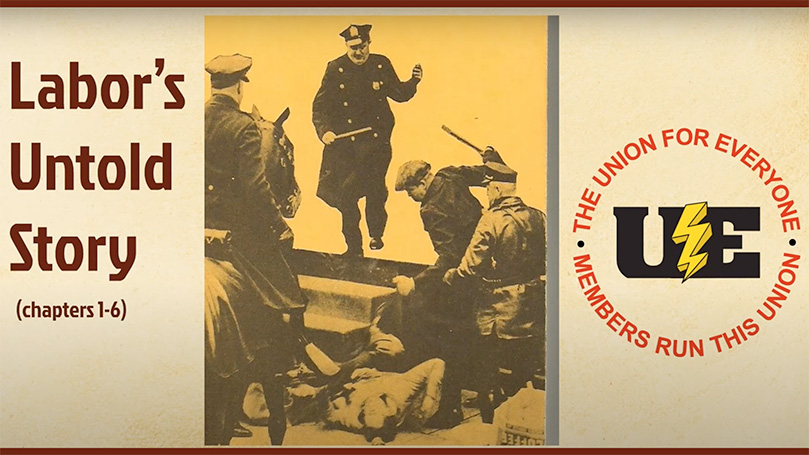Child Labor In Yemen: The Untold Story Of Child Drivers

Table of Contents
The Pervasive Reality of Child Drivers in Yemen's Conflict
The use of child drivers in Yemen is a stark consequence of the ongoing conflict and the resulting societal collapse. It's a pervasive problem, hidden within the larger crisis but demanding urgent attention.
The Driving Factors
Several interconnected factors force children into the dangerous profession of driving:
- Crushing Poverty: The prolonged conflict has plunged millions into extreme poverty, forcing families to rely on any income source, even if it means endangering their children. The meager earnings a child driver can bring can be the difference between survival and starvation for an entire family.
- Lack of Educational Opportunities: The destruction of schools and the displacement of families have severely limited access to education for children. With limited or no prospects for formal employment, driving becomes a seemingly viable, albeit perilous, option.
- Breakdown of Family Structures: The war has fractured families, leaving children vulnerable and lacking the support and protection they need. Orphaned children or those from broken homes are particularly susceptible to exploitation.
- Exploitation by Criminal Networks: Unscrupulous individuals and organizations involved in smuggling, illegal activities, and even armed conflict exploit children's vulnerability, forcing them into dangerous driving roles. Children are often preferred due to their perceived lack of resistance and their ability to evade detection by authorities.
Types of Driving Jobs
Child drivers in Yemen undertake a variety of hazardous tasks:
- Transporting Goods: Children often drive small trucks and carts, navigating congested markets and treacherous roads, carrying goods ranging from food staples to building materials.
- Passenger Transport: Some children drive taxis or minibuses, exposing themselves and passengers to significant risks. These vehicles are often poorly maintained and lack safety features.
- Smuggling Operations: Tragically, children are sometimes used to transport contraband goods, exposing them to violence and arrest. Their small size and perceived innocence might make them seem less suspicious to checkpoints.
The Dangers Faced by Child Drivers
The risks faced by child drivers are immense:
- High Accident Rates: Inexperienced and untrained, these children are significantly more prone to accidents, resulting in injuries, disabilities, or even death.
- Violence and Abuse: Child drivers are highly vulnerable to violence, abuse, and exploitation from armed groups, criminal gangs, and even corrupt officials.
- Exposure to Hazardous Materials: They often transport dangerous goods without proper safety precautions, putting their health at serious risk.
- Severe Psychological Trauma: The constant fear, stress, and exposure to violence lead to profound psychological trauma, affecting their mental health and well-being for years to come.
The Legal and Ethical Implications of Child Drivers in Yemen
The employment of child drivers in Yemen is a grave violation of international human rights laws.
Violation of International Laws
The practice flagrantly violates numerous international conventions and treaties, including the UN Convention on the Rights of the Child and the International Labour Organization's Minimum Age Convention. These legal instruments explicitly prohibit the exploitation of children through child labor and ensure their protection from dangerous work.
Lack of Enforcement
Despite the clear legal violations, enforcement in Yemen is extremely weak due to the ongoing conflict, the fragility of state institutions, and the limited capacity of law enforcement agencies. This lack of oversight allows the exploitation of children to continue unchecked.
The Ethical Responsibility of the International Community
The international community bears a significant ethical responsibility to intervene and protect these vulnerable children. The sheer scale of the problem demands concerted action from governments, international organizations, and humanitarian agencies. Ignoring this crisis is morally unacceptable.
Efforts to Combat Child Labor and Protect Child Drivers in Yemen
While the challenges are immense, there are ongoing efforts to address child labor and protect child drivers in Yemen.
Existing Humanitarian Aid Efforts
Several humanitarian organizations are working to provide basic necessities such as food, shelter, and medical care to vulnerable families, aiming to reduce their reliance on child labor. Educational initiatives are also underway to provide children with alternative pathways to a better future.
Challenges in Implementation
Implementing these initiatives faces significant hurdles:
- Security Concerns: The ongoing conflict and insecurity in many parts of Yemen severely limit access for aid workers and hamper the delivery of aid.
- Access Limitations: Reaching remote and conflict-affected areas where child drivers are most prevalent is extremely difficult due to logistical challenges and security risks.
- Funding Gaps: The humanitarian crisis in Yemen is massively underfunded, leaving organizations struggling to meet the overwhelming needs.
- Logistical Difficulties: The destruction of infrastructure makes the delivery of aid and services incredibly challenging.
Long-term Solutions & Recommendations
Addressing the root causes of child labor requires a multi-pronged approach:
- Increased Funding for Education and Vocational Training: Investing heavily in education and skills development programs will provide children with alternatives to hazardous work.
- Supporting the Development of Child Protection Mechanisms and Legal Frameworks: Strengthening the legal framework and creating effective mechanisms for child protection is crucial.
- Strengthening Collaboration: Collaboration between the Yemeni government, international organizations, NGOs, and local communities is essential for successful interventions.
- Raising Public Awareness: Combating the social acceptance of child labor requires raising public awareness about the harmful consequences and promoting alternative solutions.
Conclusion
The use of child drivers in Yemen is a devastating consequence of the ongoing conflict and widespread poverty. This practice violates fundamental human rights, exposing children to extreme danger and trauma. While humanitarian efforts are underway, they face significant challenges. Addressing this crisis requires a sustained and comprehensive strategy that tackles the root causes of child labor, strengthens child protection mechanisms, and provides alternative pathways for children to escape the vicious cycle of poverty and exploitation. Learn more about combating child labor in Yemen, support organizations working to end child drivers in Yemen, and demand action to prevent the exploitation of Yemeni children. Visit [link to relevant organization 1], [link to relevant organization 2], and [link to relevant organization 3] to learn more and get involved.

Featured Posts
-
 Russias Putin Avoiding Nuclear Weapons In Ukraine Conflict
May 06, 2025
Russias Putin Avoiding Nuclear Weapons In Ukraine Conflict
May 06, 2025 -
 Viral Sensation Jeff Goldblum And His Oscar Photo Reaction
May 06, 2025
Viral Sensation Jeff Goldblum And His Oscar Photo Reaction
May 06, 2025 -
 Madhu Chopra On Priyanka Chopras Miss World Two Piece Outfit Rejection
May 06, 2025
Madhu Chopra On Priyanka Chopras Miss World Two Piece Outfit Rejection
May 06, 2025 -
 Kontrowersyjny Eksport Trotylu Z Polski Analiza Zamowienia
May 06, 2025
Kontrowersyjny Eksport Trotylu Z Polski Analiza Zamowienia
May 06, 2025 -
 Pratts Blunt Comment On Patrick Schwarzeneggers White Lotus Scene
May 06, 2025
Pratts Blunt Comment On Patrick Schwarzeneggers White Lotus Scene
May 06, 2025
Latest Posts
-
 Fortnite Sabrina Carpenter Skins Locations And Methods
May 06, 2025
Fortnite Sabrina Carpenter Skins Locations And Methods
May 06, 2025 -
 How To Unlock Sabrina Carpenter Skins In Fortnite
May 06, 2025
How To Unlock Sabrina Carpenter Skins In Fortnite
May 06, 2025 -
 Fortnite Getting Sabrina Carpenter Skins A Complete Guide
May 06, 2025
Fortnite Getting Sabrina Carpenter Skins A Complete Guide
May 06, 2025 -
 Fortnite Sabrina Carpenter Guide Unlock Skins And Best Loadouts
May 06, 2025
Fortnite Sabrina Carpenter Guide Unlock Skins And Best Loadouts
May 06, 2025 -
 Mastering Sabrina Carpenter In Fortnite Strategies And Gameplay Guide
May 06, 2025
Mastering Sabrina Carpenter In Fortnite Strategies And Gameplay Guide
May 06, 2025
